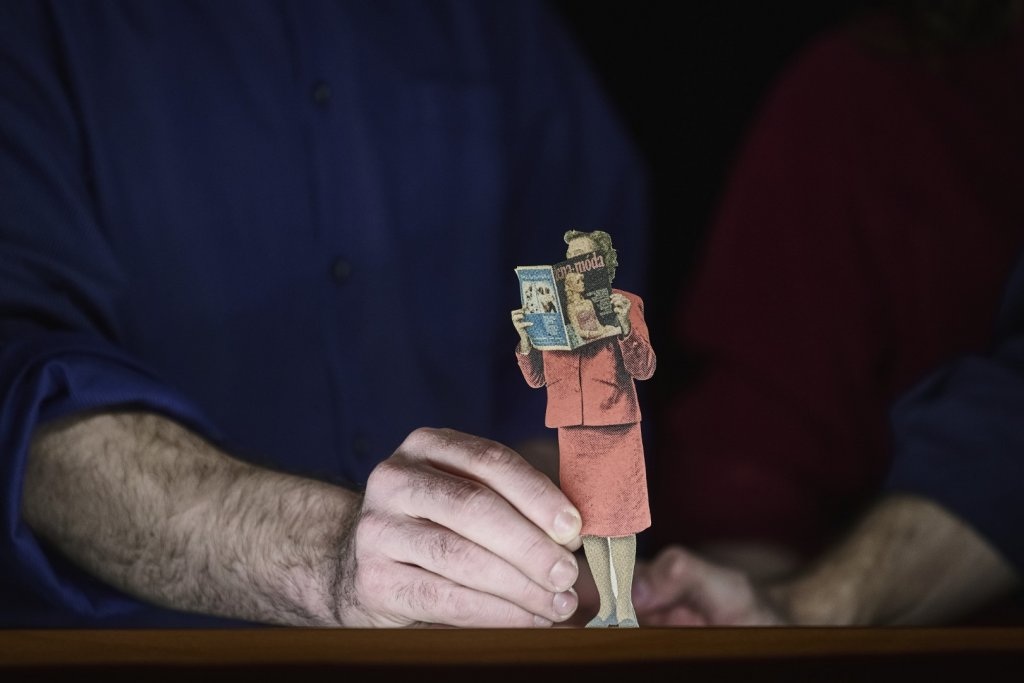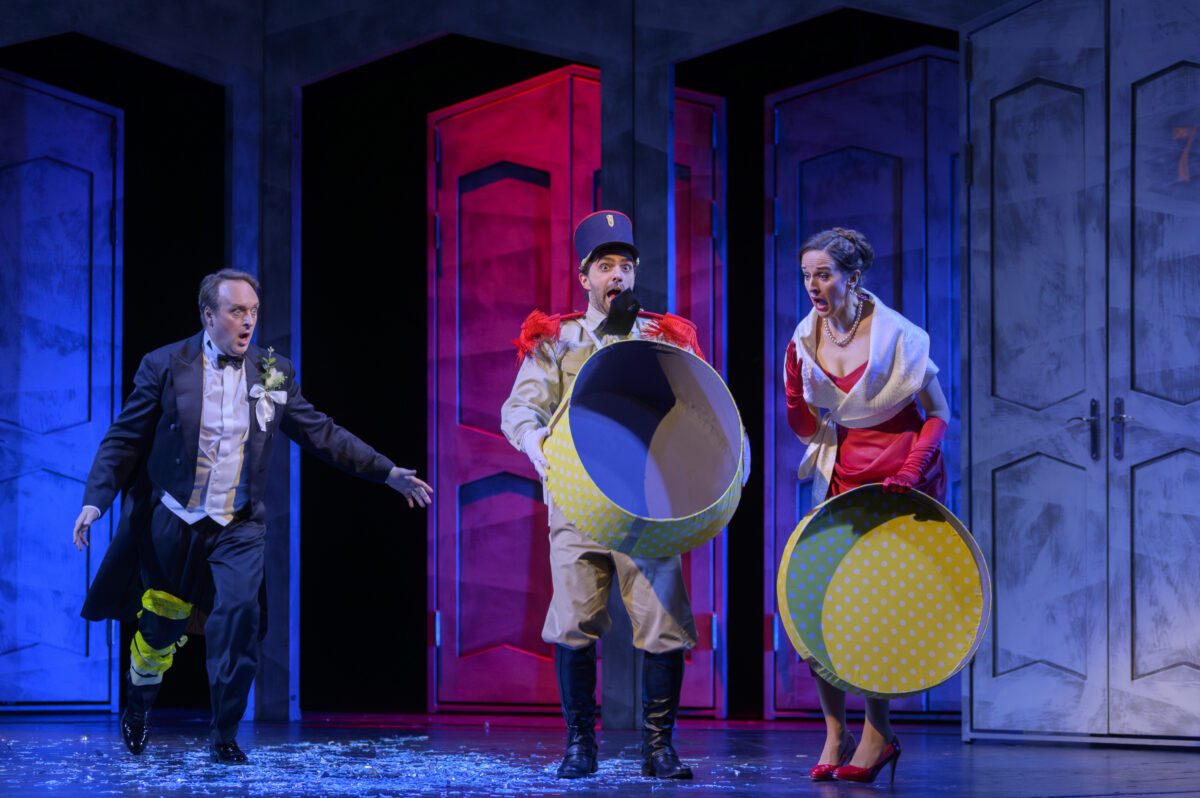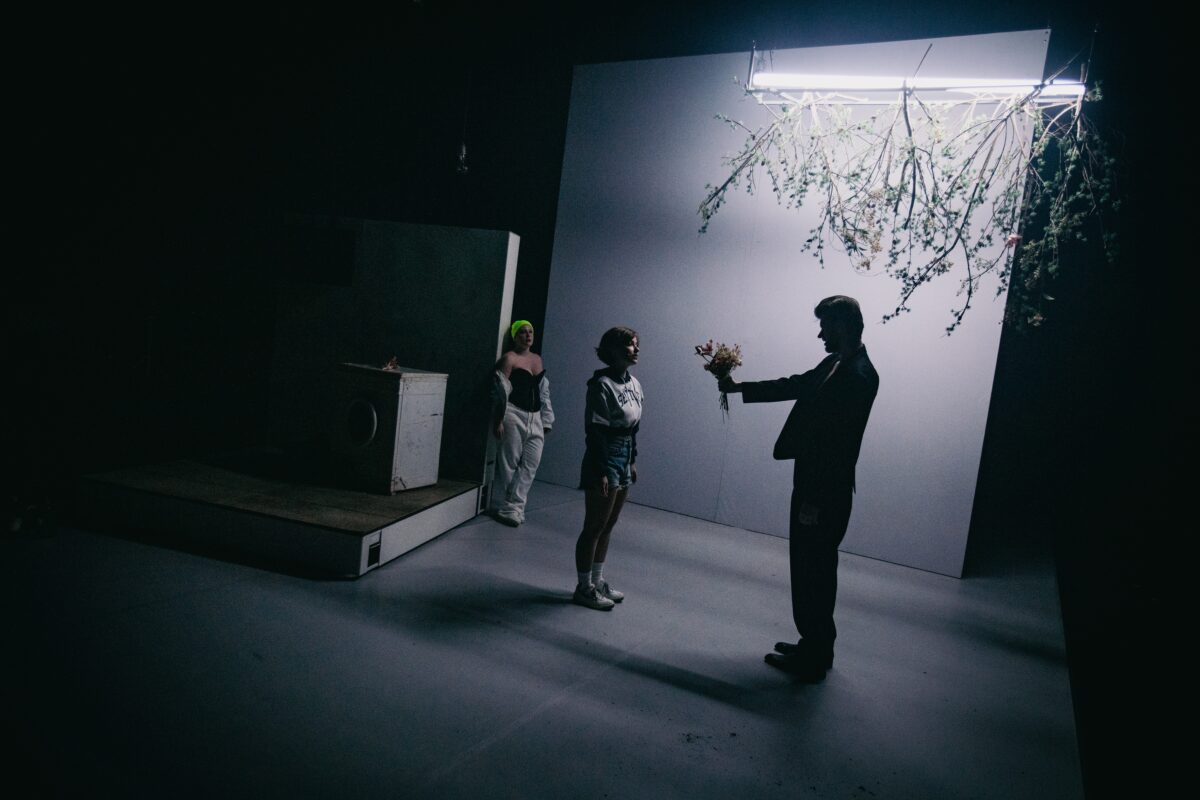A journey through a world of empty vessels that need to be filled – with food, with light, with sound, with your life. The sounds of gamelan, or the Loreta bells, are the accompaniment for the stumbling journey of nameless heroes into the darkness, or getting stuck in routine activities.
The main means of expression of the project is sound, combined with light and minimalist action, during which the heroes sometimes chase impossible goals and then always freeze in the unchanging gesture of the figures from the astronomical clock. Burial vessels, rabbit feeding bowls, tramp bowls, Tibetan bowls, and a tsukubai hand-washing container – all these form a sound and light system that resounds with the strokes of a stick or an algorithm. In Bowls, we watch a kind of psychedelic astronomical clock on which the secular characters adopt some aspects of traditional saints or function as “non-playing characters” (NPCs), a group of characters without will, populating the vast worlds of modern video games. The protagonists of the production spin on squirrel wheels of their specific activities until they collapse from exhaustion. The begging bowl is filling up.
With this production, the group returns to its early days of experimenting with slightly cryptic stage compositions.
About the company
Since 2005, Handa Gote Research & Development has worked on the boundaries between theatre, contemporary dance, the visual arts, music, performance and conceptual art.
The ensemble is interested in the concept of post-dramatic and post-spectacular theatre, non-linear narratives, and the application of experiences from contemporary music and visual arts within theatre. Its performances involve the creative use of technology – both older technology and the most modern available. In most of its projects, the ensemble works with media archeology; its documentary theatre works focus intensively on “small (personal) histories.”
Over the years, the ensemble has created numerous works, including the loose trilogy Memory, consisting of the performances Computer Music, Ekran, and Trains.
Other thematically-related performances include Mr. Roman and Clouds.
Nearly all of Handa Gote’s performances relate in some way to death, memory,
and forgotten or disappearing things, phenomena, and habits.
In this regard, Handa Gote’s dramaturgy is completely consistent,
and the ensemble plans to focus on these subjects in the future as well.
Apart from theatre, Handa Gote Research & Development is also involved in music, such as through the post-Krautrock band B4 and the Federsel and Radio Royal electronic projects (which work with media archeology and recycling).
Also worth noting are the ensemble’s activities in the visual arts (the exhibition “Semi-found objects, things and tools used in performing art”), and other exhibitions at Design Blok, the Prague Quadriennale, Places of Act, Školská 28, Window Gallery, and the National Library of Technology.
Although Handa Gote Research & Development does not want to limit its work to theatre, in creating its performances its members do not think so much about the form of the performance, but rather about the subject, the message and the process – which, as the saying goes, is more important than the final outcome.
genres
Interdisciplinary / No Language Barrier
THEATRE / COMPANY
Handa Gote Research and Development
CZECH TITLE
Misky
AUTHOR
Handa Gote
Choreography
Handa Gote
COMPOSER
Handa Gote
DRAMATURGY
Handa Gote
STAGE DESIGN
Handa Gote
LIGHTING DESIGN
Handa Gote
COSTUME DESIGN
Handa Gote
LENGTH OF THE PERFORMANCE
50 minutes
NUMBER OF TRAVELLING PERSONS
4
LANGUAGE
nonverbal
AUDIENCE
adult, children 12+
STAGE AREA
middle, large

 Learn
Learn







